Bran Castle – The Real-Life “Dracula’s Castle” In Romania
Bran Castle, often referred to as “Dracula’s Castle,” is located on a rocky hill near the town of Brasov in Romania.
Although Bram Stoker, the author of the 1897 novel “Dracula”, never visited Romania, the Bran Castle has become famous for its connection to his legendary vampire.
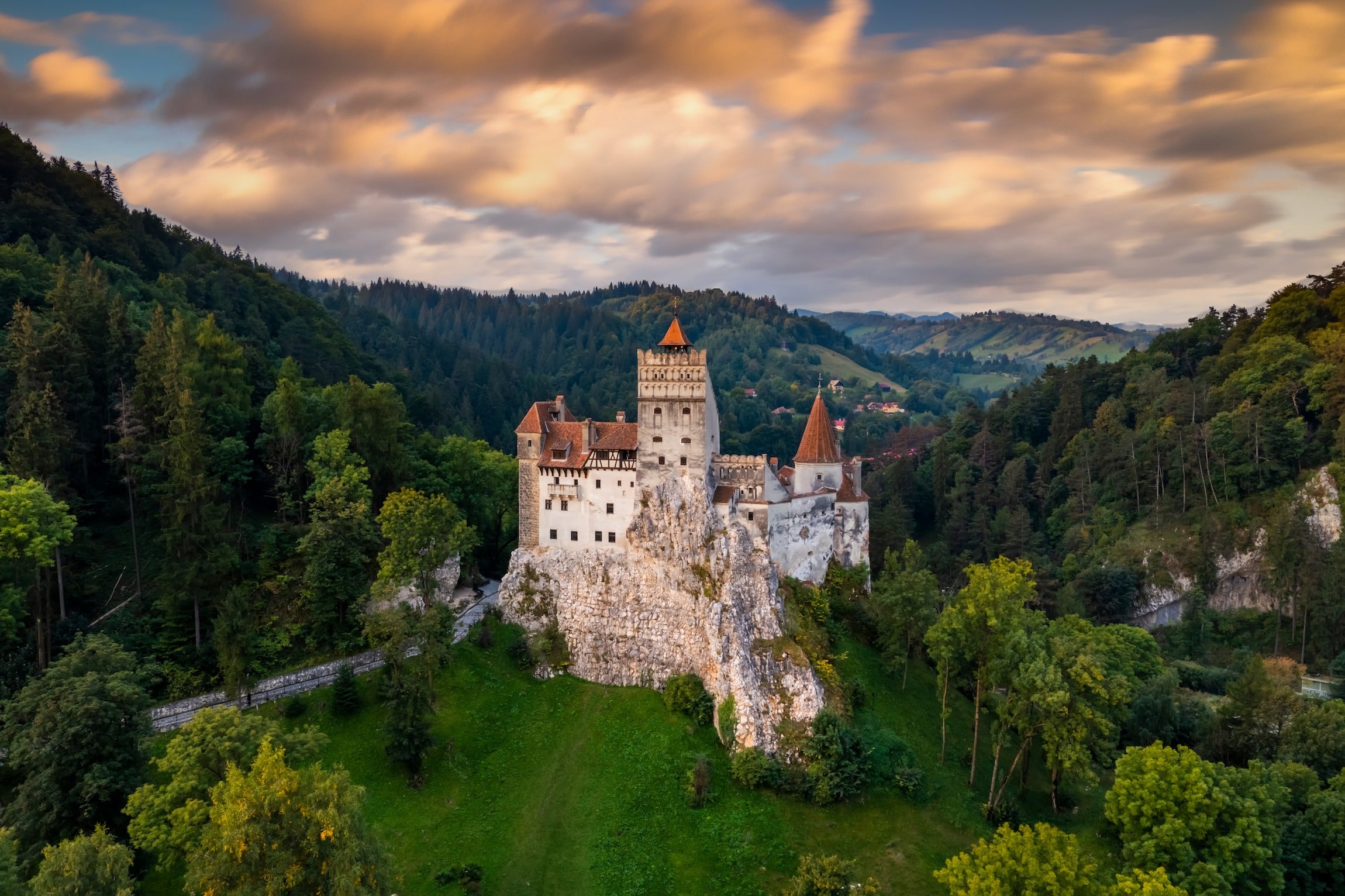
When was the castle built?
The Bran Castle was built in the late 1300s by Saxons with permission from King Louis I of Hungary.
It served as a strategic fortress against the Ottoman Empire.
The castle’s sturdy walls and defensive position made it a crucial military stronghold.
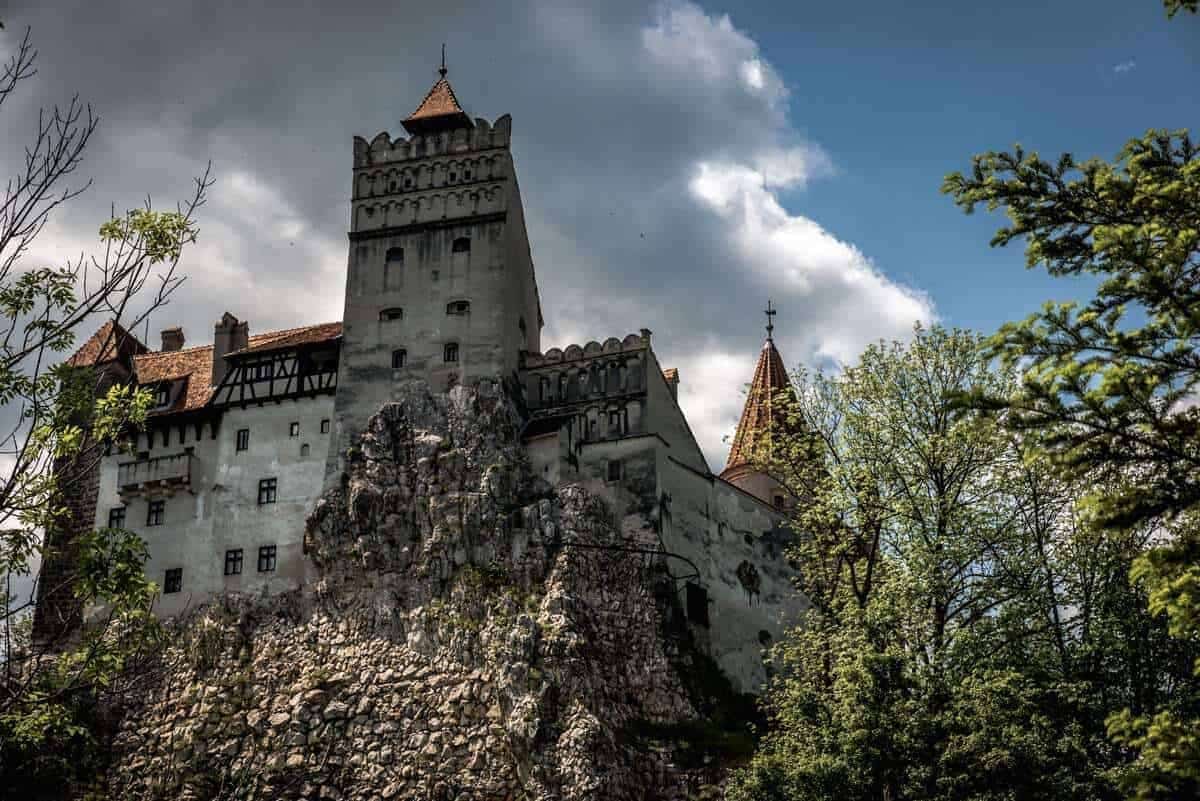
Who lived in this castle?
In 1920, Bran Castle became a royal residence for Queen Maria of Romania, who lovingly restored it.
The castle was a favorite retreat for the queen, and after her death, her heart was placed in a silver box inside a marble sarcophagus, which was interred in a chapel near the castle.
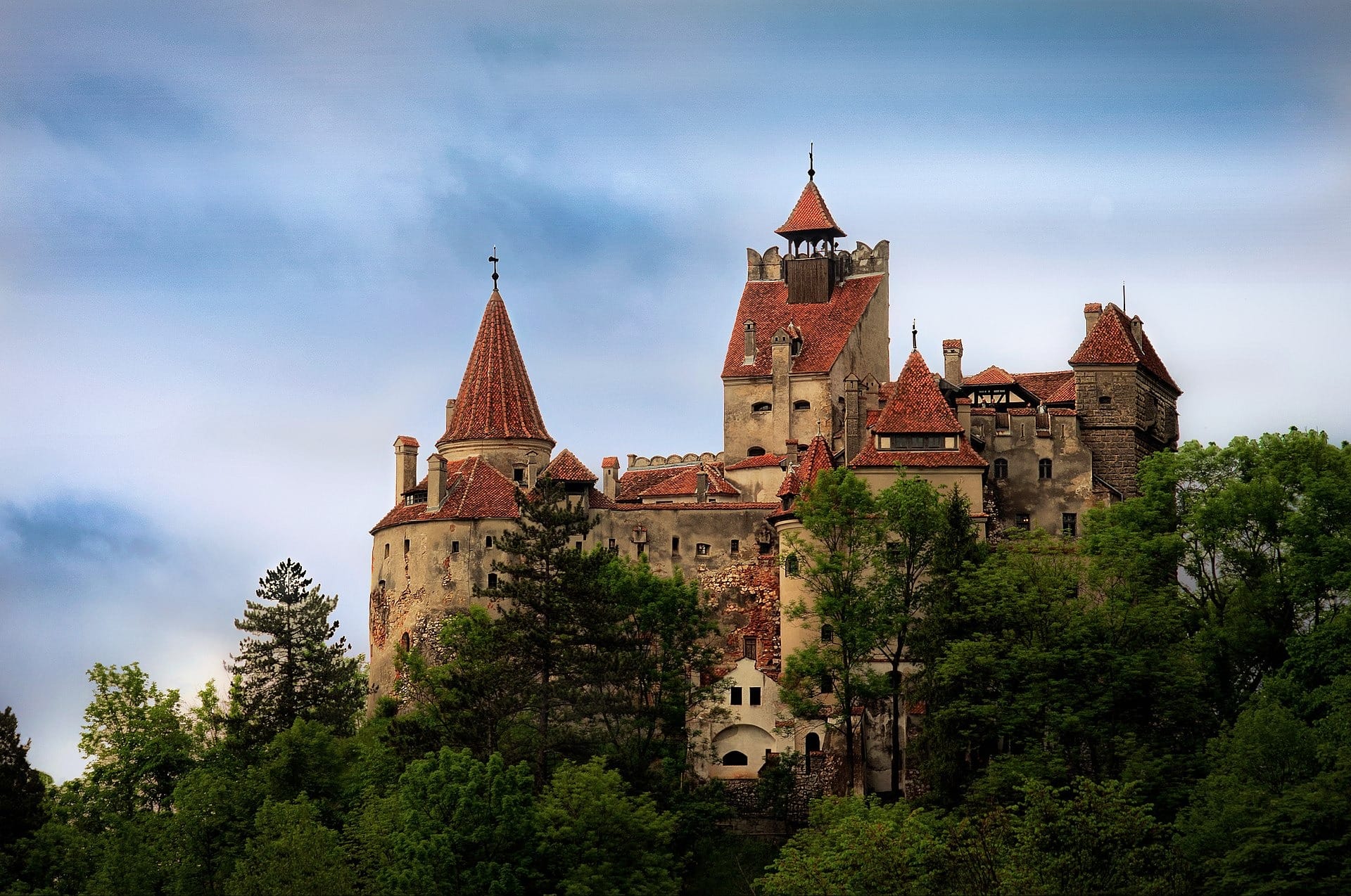
After the fall of the Romanian monarchy, Bran Castle became a museum in 1956.
It now houses an impressive collection of art and furniture from Queen Maria’s era, giving visitors a glimpse into the royal lifestyle.
In 2009, the castle was returned to its rightful heirs, descendants of Princess Ileana of Romania and Archduke Anton of Austria, and opened to the public as a private museum.
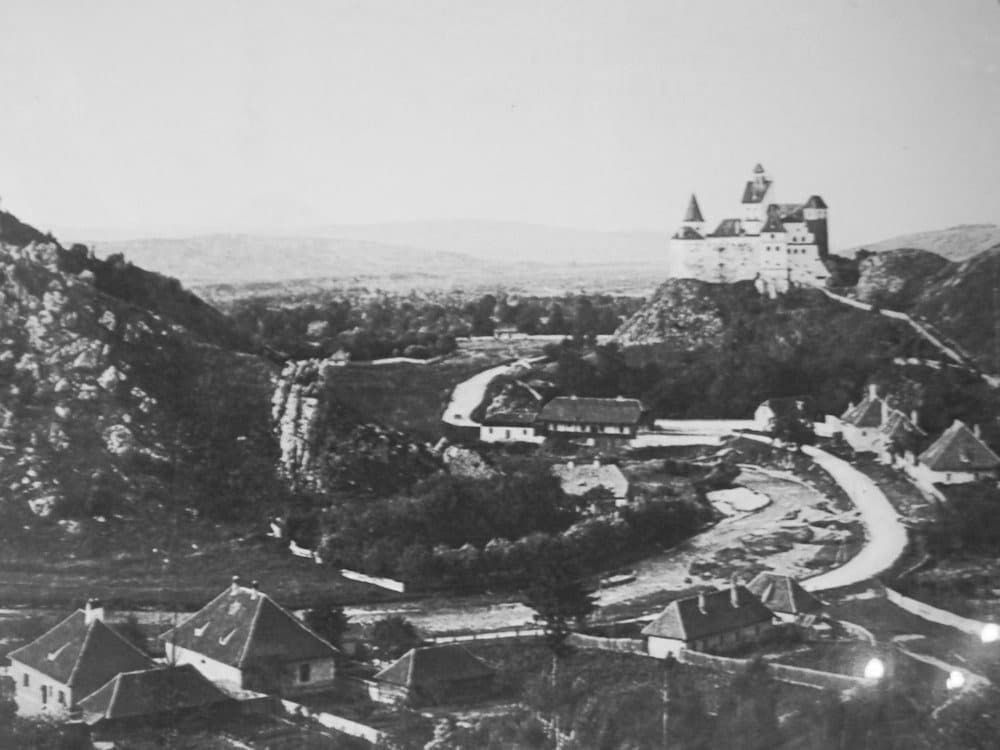
Architecture
The Bran Castle was designed in Gothic and Medieval styles.
It features tall towers, pointed arches, and intricate stonework, typical of Gothic architecture.
Its exterior combines medieval military design with Gothic elements, creating an imposing structure.
Courtyard
The stone-paved courtyard served as a central hub for castle activities and is now a picturesque area for visitors to explore.
It also provides access to various parts of the castle, including the dungeon and the watchtower.
The watchtower offers panoramic views and was used for surveillance and defense.
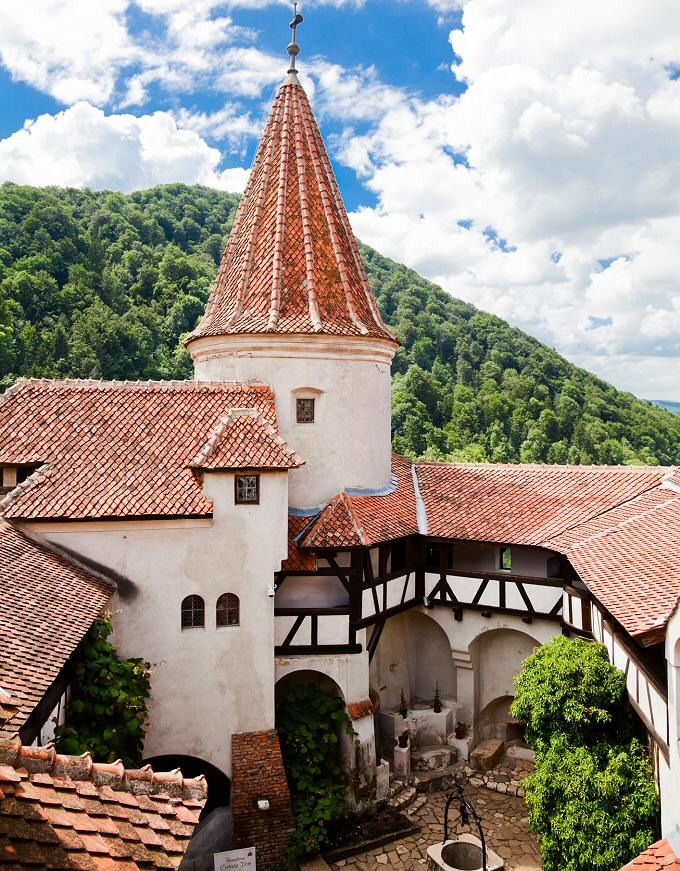
The castle has four floors connected by winding staircases and hidden passages, following the rock’s contours.
Secret passage
One interesting feature is a secret passageway discovered during renovations in the 1920s, connecting the first and third floors.
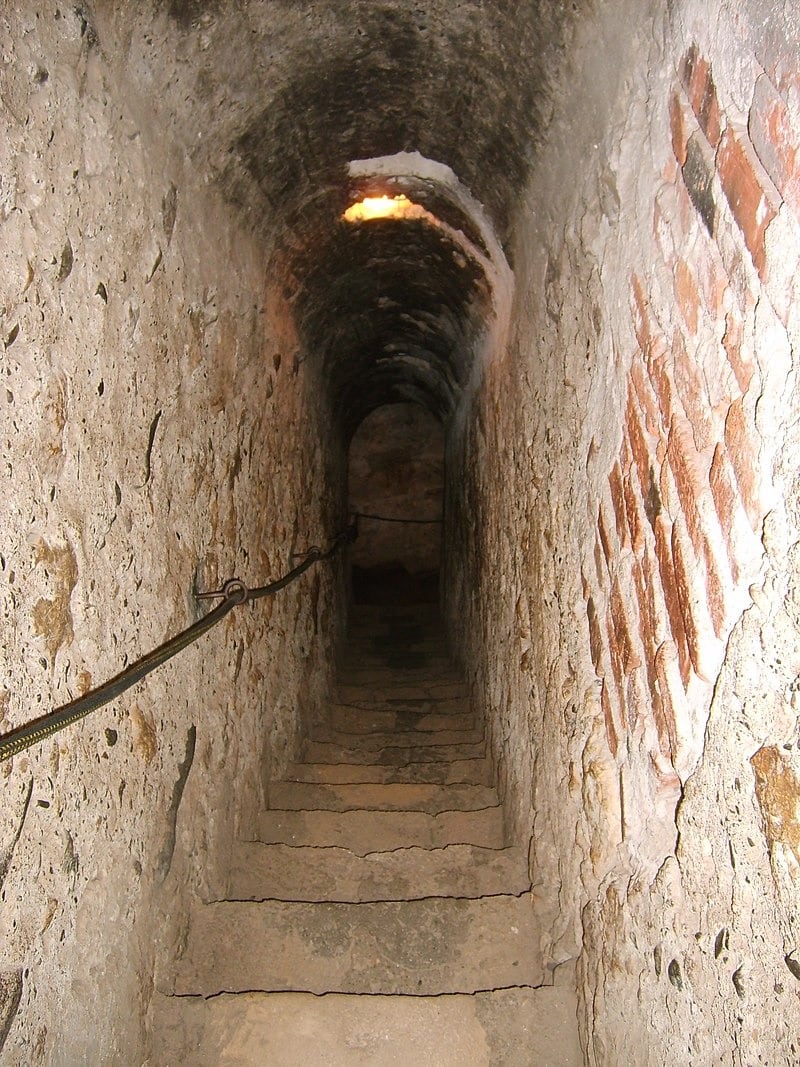
19th-Century Stone Cross in the park
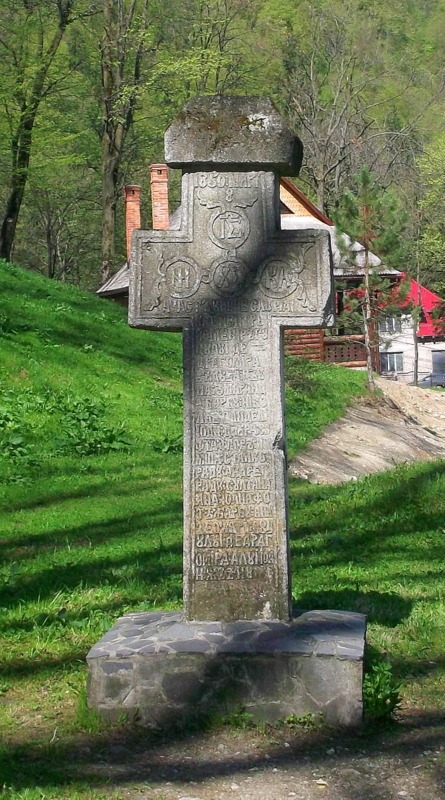
The Kitchen
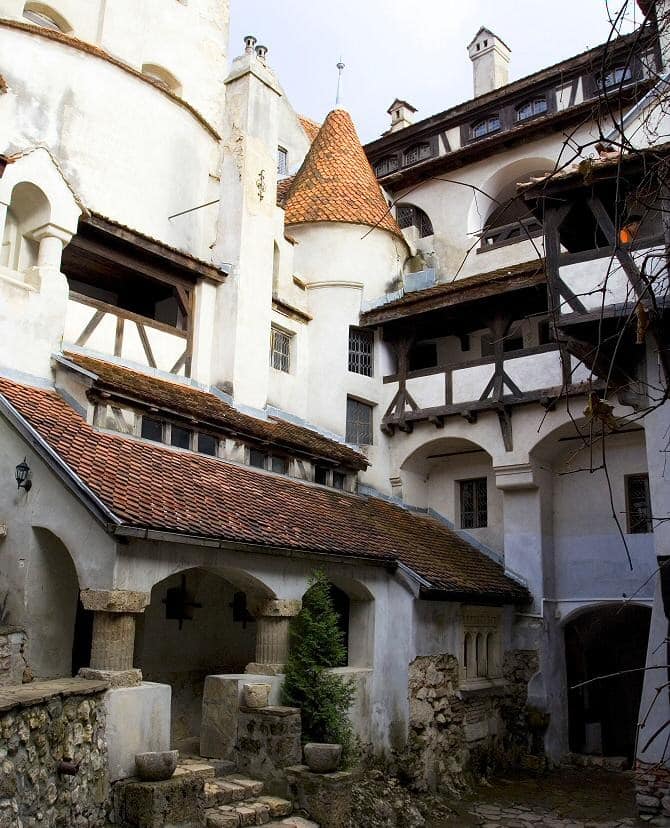
Rooms
Inside, the castle has 57 rooms with wooden beams, ornate carvings, and antique furniture filled with historical artifacts.
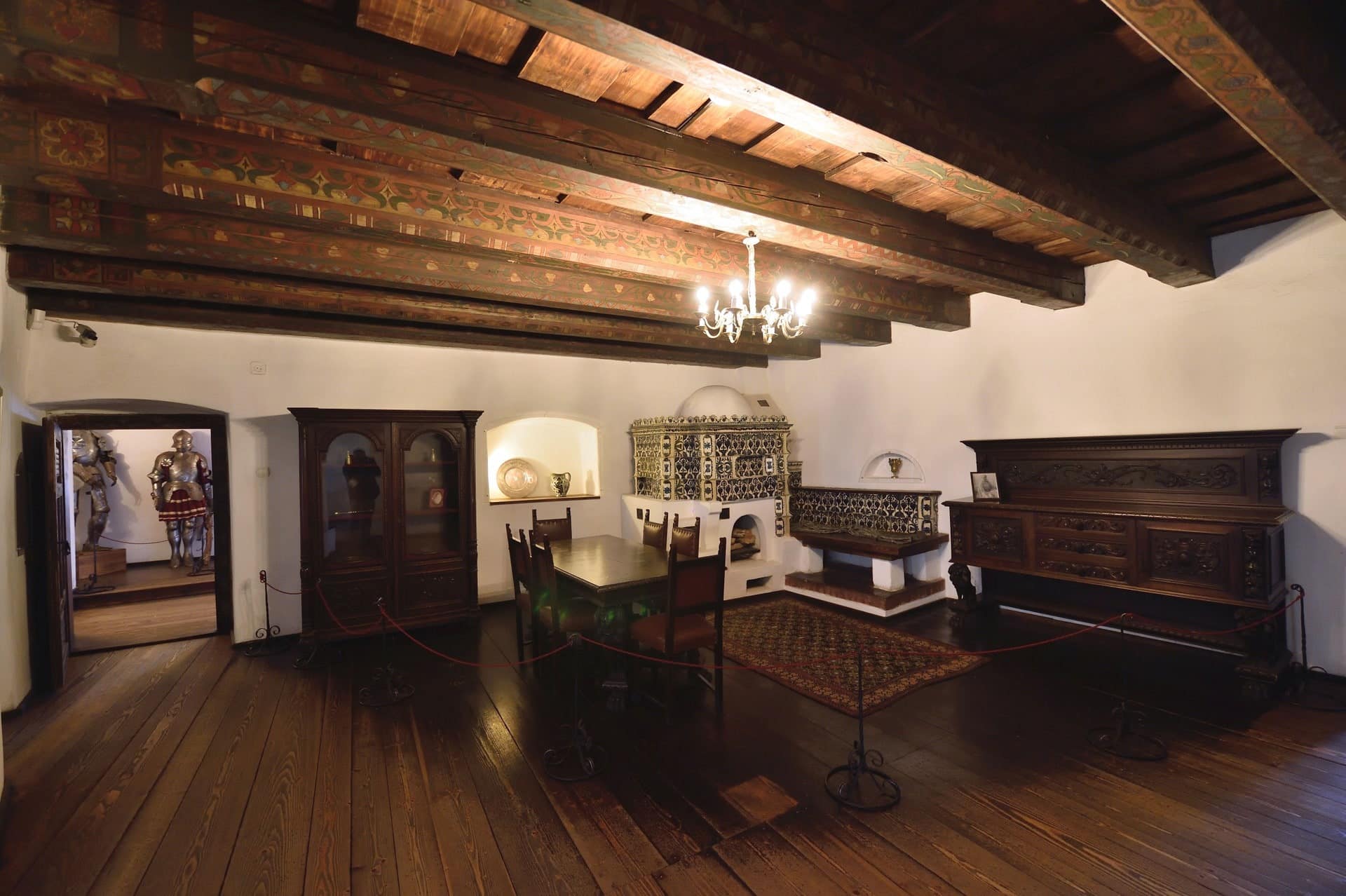
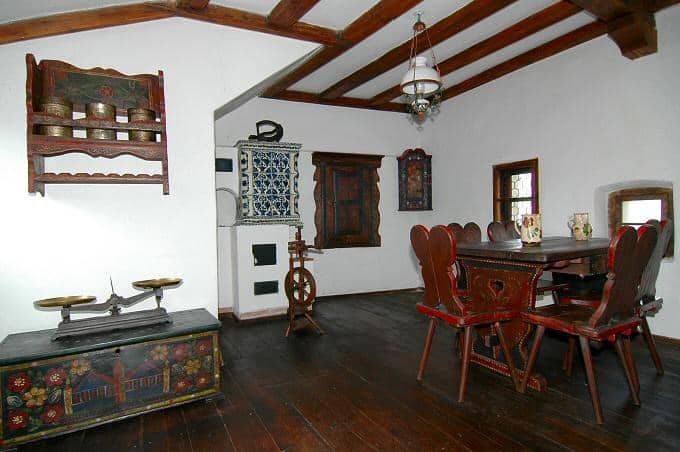
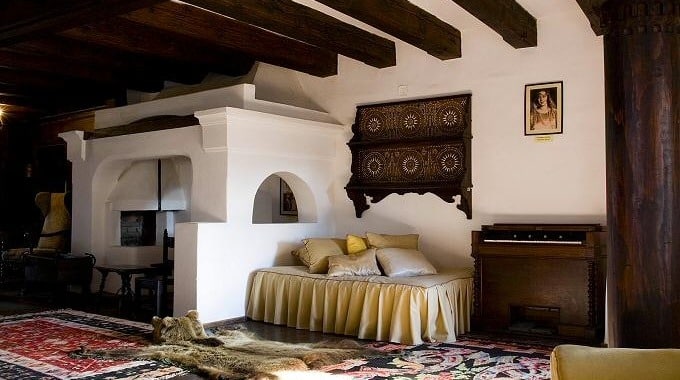
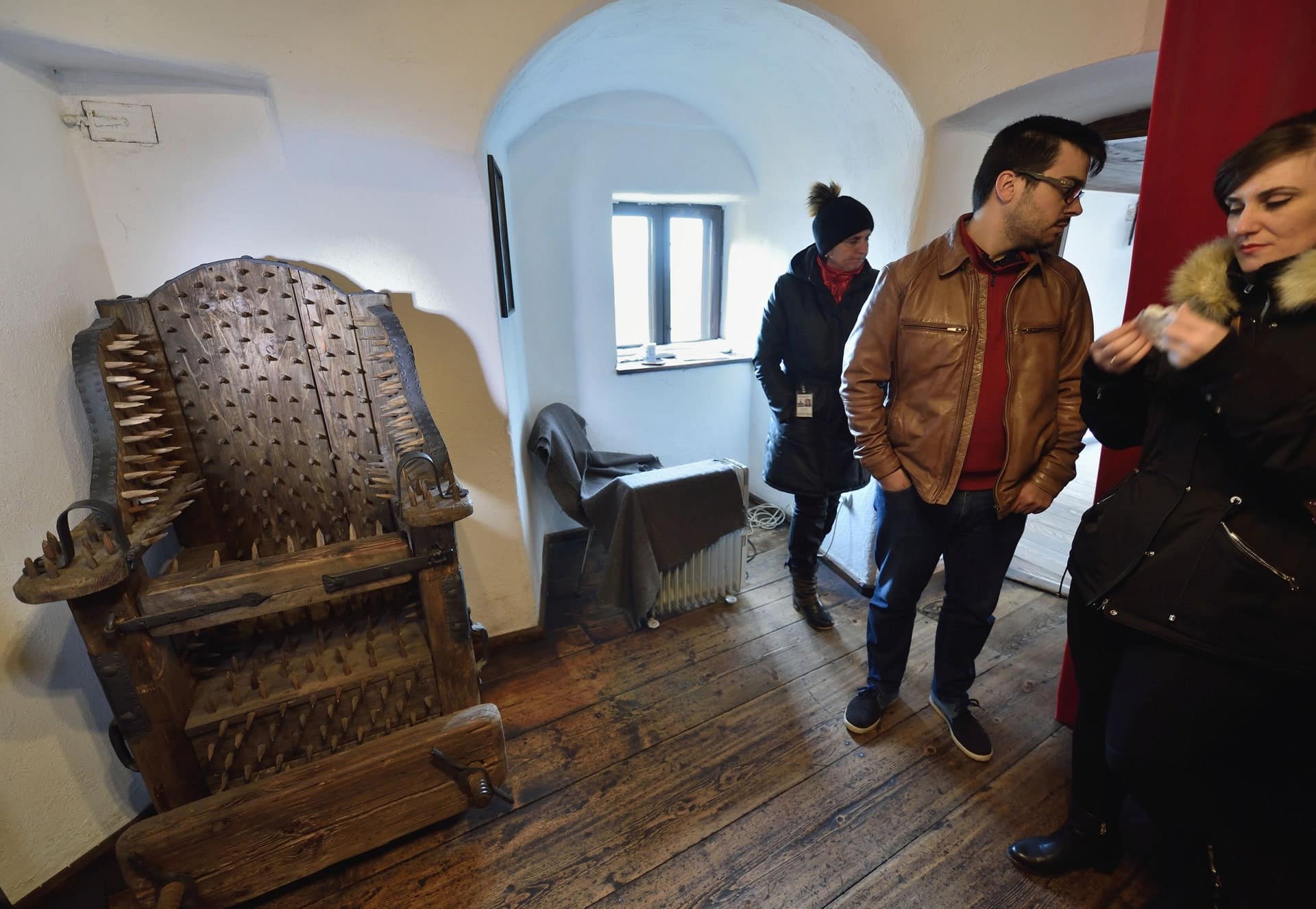
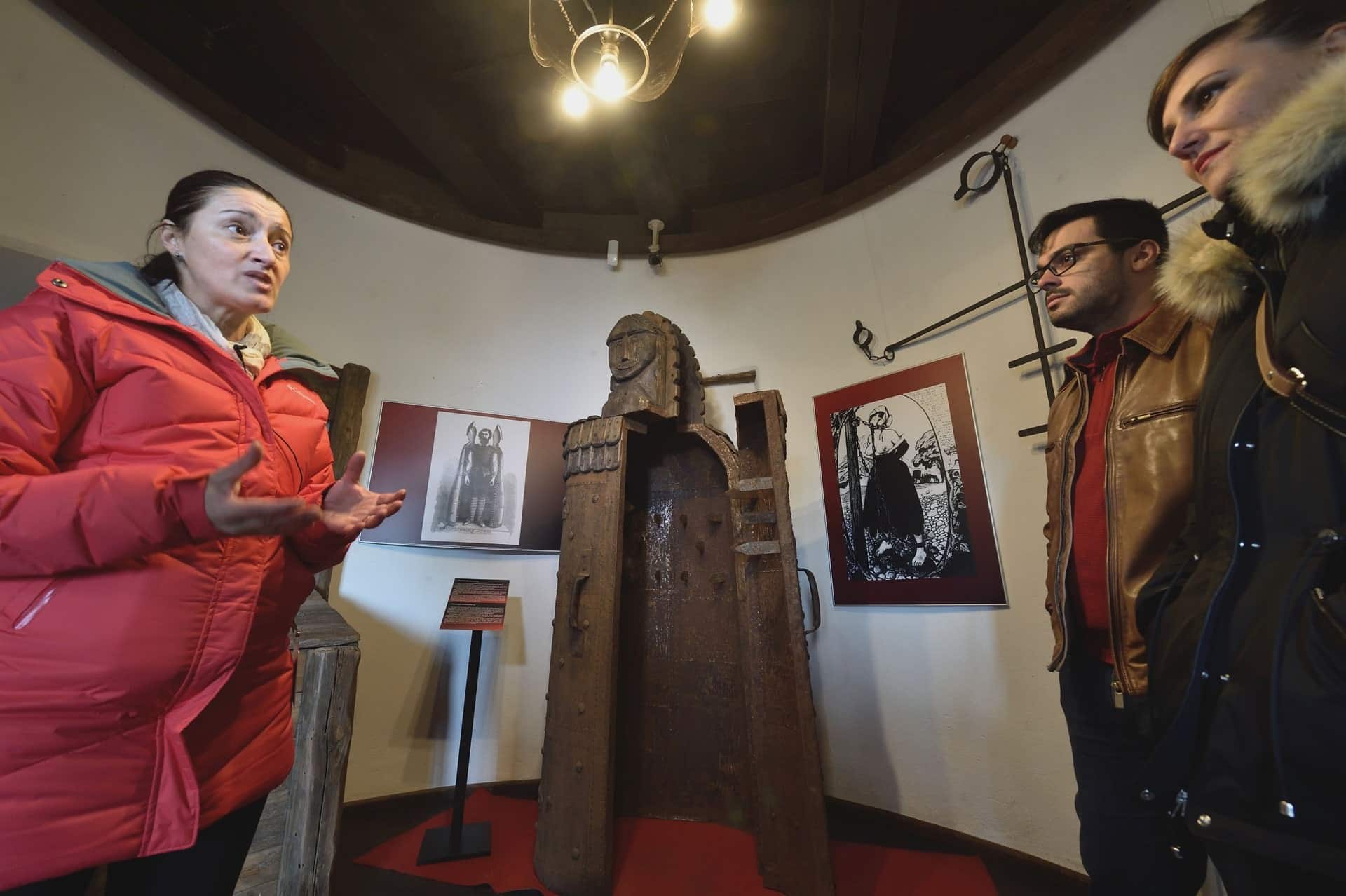
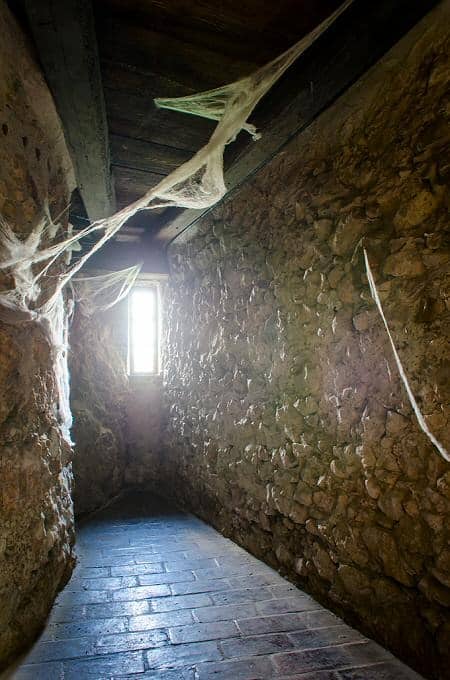

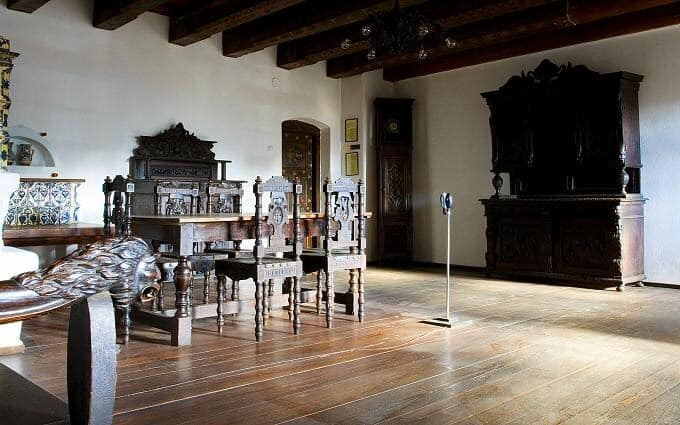
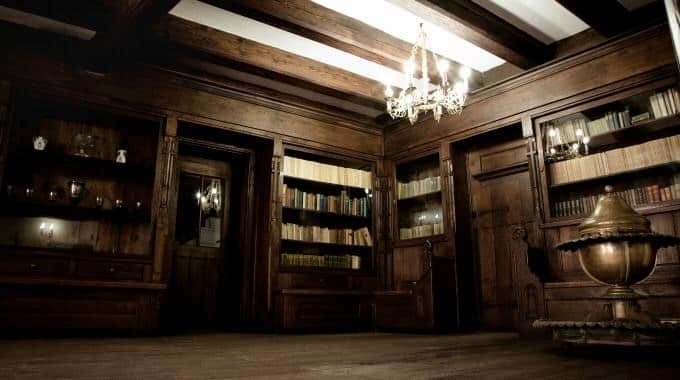
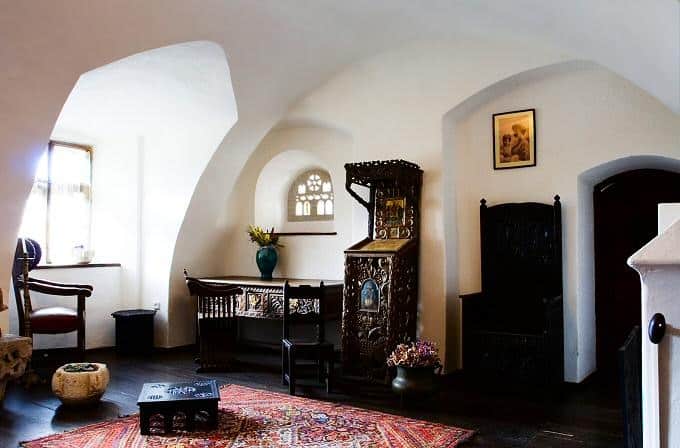
The Dracula’s Castle
Many myths link Vlad III Dracula, known as Vlad the Impaler, to Bran Castle.
However, most historians agree that Vlad never visited Bran Castle, as it was not under his control or a place he would have visited.
Some once believed he was imprisoned there in 1462, but historians now think he was held in a fortress in Budapest.
Connection to Bram Stoker’s Dracula
Bran Castle is not mentioned in Bram Stoker’s novel Dracula, and the description of Dracula’s castle in the book does not match Bran Castle.
The link between Bran Castle and Dracula is mainly for tourism.
Stoker, while researching Transylvania, learned about Vlad III’s brutal actions and used the name “Dracula” for his character.
However, Stoker’s Dracula was not entirely based on Vlad III. The idea that Vlad inspired Dracula largely comes from American movies.
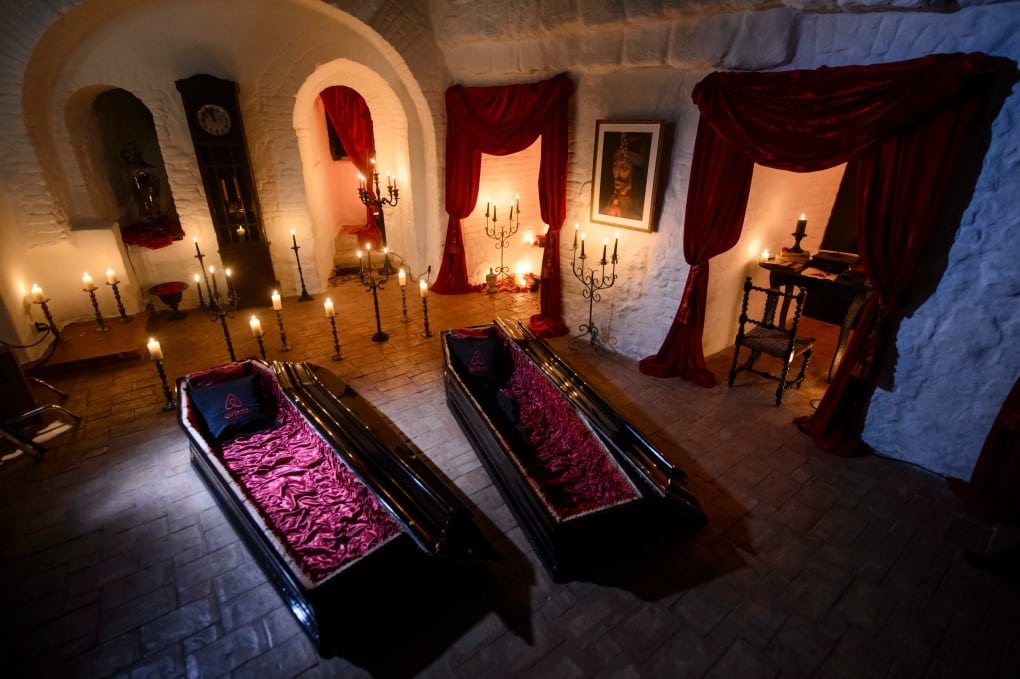
Sleeping in Coffins at Dracula’s Castle
In 2016, Bran Castle hosted a unique event where visitors could sleep in coffins for a night, organized by Airbnb.
The Canadian siblings, Tami and Robin Varma, won the opportunity, arriving in a horse-drawn carriage to spend the night in red velvet-lined coffins.
They dined on traditional Transylvanian food and immersed themselves in the Dracula legend, honoring their grandfather’s expertise in Gothic literature and vampire lore.

